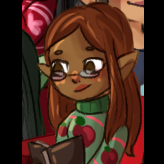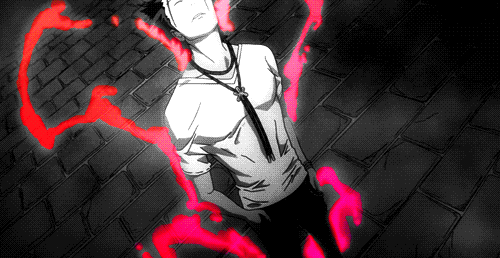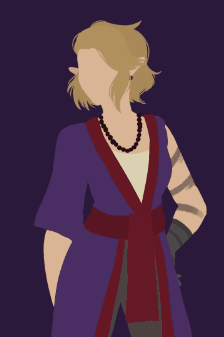-
Posts
590 -
Joined
-
Last visited
Reputation
362 Incredible
About Katherine1
-
Rank
Apple Druid
- Birthday 09/29/1988
Contact Methods
-
Discord
Emily#8240
-
Minecraft Username
Katherine1
Profile Information
-
Gender
Female
-
Location
Wisconsin
Character Profile
-
Character Name
Apple Druid Leyun Winterleaf
-
Character Race
Wood Elf
Recent Profile Visitors
12984 profile views
-
And will said ST/GM/Admin be allowed to continue RPing that character since they’re staff?
-
And even then with characters from staff, becoming a patron/god should render the character unplayable to them as well, requiring other staff members to RP them, or else it’s just a path to godhood for the staff. I don’t like it. I see attempts to dethrone the current gods in our future if this follower->patron->god pipeline remains in place.
-
Please, we all know he’s a Voidal Horror ?
-
Saying that won’t make it so ?
-
Given the Aspects are, in fact, two (plus one “secret”) distinct aengudaemons, how do they fit with these new covenants? Are they a covenant? Are they grouped together under a larger covenant? Are they split between covenants but still working together when it comes to nature? What’s the plan here?
-

[Shelved][✓] [CA Race Lore] - Epiphytes
Katherine1 replied to Katherine1's topic in Recently Outdated Lore
Yeah, it was part of how broken that quote box was. It was also putting an invisible box over half the screen, blocking the quote and edit buttons. I did some css stuff in my browser to get at the edit link so I could remove it, though. All good now ? EDIT: We are doing some work fluffing up some of the language and clarifying some vague points, so I will be updating the lore when we’ve finished. EDIT 2: Edits are done for now. There may be more language fluffing later. EDIT 3: Updated after ST feedback. Removed limb regrowth to squeeze down into a group A creature, supported bonzais to continue supporting existing characters. -

[Shelved][✓] [CA Race Lore] - Epiphytes
Katherine1 replied to Katherine1's topic in Recently Outdated Lore
Thanks for the praise! I’m really happy with how the lore turned out ? See, here’s the thing with flammability. People have it in their head that wood burns really well. Well, no. dry wood burns well. Have you ever tried to burn freshly cut wood that hasn’t had time to dry yet? It really doesn’t want to burn. Enough fire can do it, but by that point, it’s engulfed in flames anyway. All this is to say that the line is stating that despite them being plants, they don’t have a specific weakness to flame. Fire will burn them a bit, and they’ll eventually catch on fire if engulfed in fire, but so will a human. The way I think about it is that they are already not that suitable for combat. They don’t gain any combat advantages and they are actually more susceptible to losing a limb in combat than a descendant (doesn’t matter if it will grow back in an RP year, that doesn’t help in the immedate term), so making them go up like they’re dehydrated in the middle of a drought is not necessary to balance them out. -

[Shelved][✓] [CA Race Lore] - Epiphytes
Katherine1 replied to Katherine1's topic in Recently Outdated Lore
Just had a long discussion with the group this was rewritten with over a topic. Going to end up undoing the change I was noting here. -

[Shelved][✓] [CA Race Lore] - Epiphytes
Katherine1 replied to Katherine1's topic in Recently Outdated Lore
-

[Shelved][✓] [CA Race Lore] - Epiphytes
Katherine1 replied to Katherine1's topic in Recently Outdated Lore
Hmm? Could you elaborate on what you are trying to convey? -

[Shelved][✓] [CA Race Lore] - Epiphytes
Katherine1 replied to Katherine1's topic in Recently Outdated Lore
Yeah, the font got slightly mangled in the copy/paste from the Google Doc to here. I'll spend some time cleaning it up and adding images tonight. EDIT: I lied. I ended up doing the changes in the morning at work. Shush. -
Origin/Background/Culture On rare occasions, once every blue moon, a seed or spore slips through a fae ring, entering into the mortal realm from the Fae realm. If it manages to grow, it will appear much like its mundane counterparts. Unlike those; however, it possesses a unique method of spreading its offspring. This Fae organism can be either a fungus or a plant, of both woody and herbaceous varieties. Regardless of whether it is plant or fungi, it will draw people in by calling out to them; much like tales of “Dryads” hearing a voice luring women to trees, or opportunistically nab unknowing Descendants who by coincidence, choose to fall asleep beside the organism. Anyone who falls asleep next to the plant will be quickly cocooned in roots and plant matter. Within the cocoon, the victim’s soul is held as their body is fundamentally remade out of plant matter. In the end, they end up resembling the plant that transformed them, their flesh, organs, bones, and appearance made entirely of the same plant. Epiphytes have always been around in some form. The oldest was by the fae trees, who made Epiphytes commonly referred to as Dryads. Herbaceous plants have made their own Epiphytes in time, which have commonly been known as Bryophytes. While their close relation hasn’t always been recognized, they are, in fact, the same base creature. Finally, the newest form to arise has come from fae fungi that have made their way here. These get referred to as Saprophytes. They are all Epiphytes. Physical Description Epiphytes bear a resemblance both to the plant they are connected to and their original race, especially before their first rebirth. Height and weight should be based on the race of the character becoming and Epiphyte. After their transformation, they bear a strong resemblance to their previous self, save that they are made out of plant matter. The plant in question matches the plant they were changed by. As they are reborn, their individual features may begin to drift away from a strict descendant appearance to something more overtly evocative of the plants they are made up of. As an example, feet could end up more of a mass of roots than something that resembles feet. These small, aesthetic changes cannot be used to grant any sort of advantage, and cannot be actively influenced. That is, an Epiphyte cannot choose to change themselves, they constantly appear as they did from immediately after being reborn, and if desired OOCly, can only change appearance with each rebirth. In spite of being made out of plant matter, the Epiphyte is able to bend and move as well as a descendant. This, unfortunately, compromises the strength of the plant matter they are made of such that they are actually susceptible to being cut more than a descendant. Despite this, they aren’t able to regrow their limbs. Of course, a new Epiphyte born from the rebirth process isn’t limited by their predecessor's injuries, but that doesn’t help the current Epiphyte. This weakening for mobility also seems to eliminate any medicinal or poisonous properties within their body, which is generally a non-issue since they normally have easy access to their plant, which does retain these properties. This also has little effect on flammability, however, as they burn about the same as any well-hydrated plant. Most Epiphytes are herbivorous, though this isn’t a strict rule. Epiphytes from carnivorous plants like pitcher plants are known to be carnivorous, and Saprophytes are known to eat just about anything dead. Epiphytes of the Dryad and Bryophyte variety require regular sunlight like the plants they are based on and will grow ill without it. Saprophytes, on the other hand, prefer shade and will grow sick with too much light, much like the fungi they are based on. Like other creatures created from descendants, the Epiphyte does retain the original race’s lifespan. That said, they also go through a more frequent cycle of renewal and rebirth, this cycle is about 25 to 50 years in length. When they reach the end of a cycle, they go through the process of rebirth mentioned below. At the end of their lifespan, they die for good like any other race. Epiphytes have such a strong connection to their plant, that the state of one will actively affect the other. The Epiphyte can feel and experience physical sensations inflicted onto their plant, and vice versa. For example, if one grows ill, the other will as well. A sickness or injury inflicted onto one will spontaneously appear onto the other. If an Epiphyte’s tree is being burned down, for example, the Epiphyte’s skin will begin to sear and burn. An Epiphyte’s body functions much like a normal Descendant’s. It can still “bleed out,” blood being sap, or some other aesthetic counterpart of the plant the Epiphyte is made out of. Injuries on an Epiphyte can be healed mundanely by a very careful healer who understands the effects herbs would have on a plant-like material. For example, tippen’s root is a coagulant and can still prevent further blood flow from an Epiphyte injury, regardless of not being Descendant flesh. Druids can heal wounded and sick Epiphytes with the blight healing spell “Blooming.” This ability infuses natural life into the Epiphyte’s body, and heals it even up to the point of lost limbs. If an Epiphyte is a druid, they will find themselves unable to blight heal themselves, and will require a separate druid to perform such. An Epiphyte’s wounds do not heal magically over time, and lost limbs do not grow back on an Epiphyte like they would on a plant. An Epiphyte’s body is fully remade, however, when they go through their “rebirth” process, and they can come out of this with as many limbs as they had when first transformed into an Epiphyte. This connection is so deep, it resembles druidic communion, although the truth of the matter is that the connection between Epiphyte and the plant is more so that one is an extension of the other. When in close proximity to the plant, they can speak to it with detail, sharing feelings and experiences in much more detail and depth than any conversation two normal Descendants could have. An Epiphyte cannot use this to metagame, however, by being informed of their own death or asking the plant what it has “seen” (for the latter, expect a response such as this: "Like it was kinda dark and dreary and it sucked and then the sun came out and I was like 'Yes!'") As mentioned, however, an Epiphyte can feel their plant’s pain from any distance, and will always know where it is at. So if a Fae plant is under attack, the bonded Epiphyte must be OOCly online and informed so they may RP the reaction to the inflicted pain. Epiphytes can produce any number of mundane seeds of their plant’s variety, and often spread them around wherever they go. They are also able to produce a single seed of a fae variety of their plant. If they try to produce a second, the first dies and becomes unable to grow. The very nature of Fae plants causes them to emit a noticeable amount of Fae energy, which is only an ambient effect that can be felt by Druids from a single plant. However, if multiple Epiphyte plants are grouped together, in what is dubbed a “Epiphyte Garden,” these energies pool and swirl about in the small, given area. Mimicking the melodies and feeling of being in the Fae realm, some Fae beings may be drawn to make their homes inside of potential Epiphyte gardens. These natural energies can help support and boost the life of mundane plants in the area, causing the garden to be very lively and verdant, and can even bring forth natural wonders which stem from them, such as Fae rings and Kuila crystals. The proper OOC rules enforced by both lore and ST must be followed, however. Fae rings can not be present in an Epiphyte Garden for example, if it is located in a tile that already features a Fae ring. And the presence of Kuila crystals and other ST-regulated items IRPly must still be approved by ST. An Epiphyte reacts poorly to blight. Worse, if either they or their plant is blighted, the blight will spread to the other as well. A blighted Epiphyte is driven mad, attacking on sight and attempting to spread its blight. There is one silver lining to this, where if one gets healed by a Blight Healer, the blight will be healed from the other as well. Unfortunately, going to blight heal the plant usually means having to get passed the Epiphyte anyway. Anyone looking to cleanse the fae plant or the Epiphyte will likely have to fight to subdue the Epiphyte in question. Epiphytes are still generally able to learn magic, with the exception of void magic as the void is toxic to Epiphytes and breaks down their bodies under extended exposure, making its use unfeasible. Mental Description An Epiphyte's priority towards their tree is that of a parent's to their child. An Epiphyte is compelled to treat their tree much like a favorite child of their own. They gain impulses to spend time with, maintain the health of, and defend their plant. An Epiphyte is not a robot entirely, however. Even though an Epiphyte will feel a strong impulse to protect their bonded plant when under attack, strong-willed Epiphytes may be able to juggle their instinct towards this or even resist it, should an extreme circumstance put them in a place where they must risk themselves, others, or their morals for the sake of their plant. Abilities Rebirth Epiphytes go through a 25 to 100 year cycle. As they get near the end of their cycle, they wither and slow. When they reach the end of their cycle, they seemingly pass away, and a new, infant Epiphyte is born from the corpse of the original Epiphyte. This Epiphyte bears some similarities in appearance to the previous Epiphyte. With each rebirth, should it be desired in an OOC capacity, the epiphyte which is born anew during the process will have slight changes to their appearance in the way of more plant-like features. Though it reaches a certain point where not much else is left to be changed, usually around the sixth rebirth. Beyond this point, the Epiphyte has reached the peak of what it can become appearance-wise. They also notably retain the soul and memories of the previous Epiphyte, though to what degree memories are retained is up to the player. They can be anywhere from hazy and distant to just as strong as they were before. Due to the impressionability of the young, personality may shift some. This infant Epiphyte grows incredibly fast, reaching full-grown within the span of a year (irl 1 week). The young Epiphyte is extremely vulnerable during this time, and will often imprint on someone to serve as their guardian until they come of age. While they retain magic, they will not have access to it until they are once again full grown. The span of this cycle translates to the player being able to have their character reborn anywhere between once a year and once every other year at the player’s discretion. It is short enough that characters with the human curse will be able to engage with the ability a few times before dying, and also allow it to happen frequently enough on an irl timescale to be an occasional source of RP. Redlines Becoming an Epiphyte does not erase existing lifespans. Epiphytes will still die of old age at the end of their original lifespan. The original Epiphytes soul is retained through this process, carrying over memories, magic, and curses. Iblees’ curses are always present. Magic goes dormant until the new Epiphyte is fully grown. Memories are up to the player to determine how they carry over. Physical changes to the epiphyte each rebirth period [Things such as feet turning into roots, hair becoming entanglements of vines, the plant they’re made of sprouting from parts of their body, etc.] slow down and eventually stop by the 6th rebirth, meaning beyond this point the epiphyte should appear to be the peak of what they can become. Beyond this point, they should stay relatively the same. Due to no underage magic allowed, magic is temporarily unavailable during the RP year where they are growing up again. This is for the best. As a real-life year is equivalent to about 52 RP years, this means that this process can only be gone through close to twice a real-life year at the most frequent, and should happen once every real-life year at the least frequent. (This range of real-life time is why this length of cycle was chosen) While personality can shift, it doesn’t become the opposite of what it was in the previous life. A total reversal of personality still requires the same amount of extensive RP to justify as it would for any other creature. Connection An Epiphyte holds a strong connection to the fae plant they grew. They are aware of its location regardless of their own location and are able to communicate with it directly when in person. Redlines This ability can’t be used to inform a character of their death. This ability does not allow communion with any plant other than their own. That requires becoming a druid. Fae Seed The Epiphyte is capable of producing a seed in order to grow one fae version of the plant that changed them. If they try to produce a second seed of their fae plant, the first will die and be unable to be coaxed back to life by a Blight Healer. If the plant is destroyed beyond a Blight Healer’s ability to heal or a map change occurs, a new fae seed can be produced. Redlines The Epiphyte can only have one fae plant at a time, and thus can only produce one seed at a time, and can only produce a seed if the old plant is either dead, or it’s a map change. The Epiphyte is driven to place this plant somewhere. They should find a place to plant this. General Redlines/Restrictions An Epiphyte does not give birth. The only “children” they have is the Epiphyte born from the rebirth process. An Epiphyte cannot bind to a plant that is rare enough to require approval or an event to find. Such plants are too rare to find a fae version of outside of the fae realm. An Epiphyte does not retain the medicinal/poisonous properties of their plant. To have access to plant matter that contains those properties, whether from their fae plant, or a mundane plant they have grown or found. An Epiphyte’s fae plant is a fae plant like the one that changed them and is capable of changing new people. Epiphytes can prevent this from happening due to their connection if required. Generally, Epiphytes tend to allow people to come by their plant unless the person is considered a risk, or under agreement with whatever authority they live under. Epiphytes don’t try to force people to sleep beside their plant as doing so puts them and their plant at risk of extermination, which is an unacceptable risk to their altered priorities. Epiphytes can’t learn void magic. Void magic is toxic to their plant bodies. They cut pretty easily. Easier than a descendant. No shrugging off sword slashes. A tree lord can’t become an Epiphyte as their soul is not housed in their husk. The fae plant will not try to change them, and if it were to try, it would simply kill the husk. An Epiphyte, likewise, can’t become a tree lord, though this due to the fact that it would sever the connection to their plant, and that would run directly counter to their post-change priorities. Only descendants can become an Epiphyte. Other creatures like liches, dragons, or animals are not targeted by fae plants. When it comes to the influence of druid abilities, communion, control, or herblore can’t be used on the Epiphyte. The fae plant can be affected, and any normal plant the Epiphyte grows can be affected. Blight healing can be used on the Epiphyte, and can be used to cure blight and heal various injuries, up to and including lost limbs. Purpose (OOC) This lore is meant to serve as the successor to both the Dryad and Bryophyte lore. Both filled the niche of a playable Fae that served as an easy entry point into playable creatures. This lore attempts to overcome the shortcomings of both prior lore pieces. This lore creates a creature that bears a resemblance to both Dryads and Bryophytes, but is open to members of any race and offers a unique experience without severing existing RP bonds. Citations
- 17 replies
-
48
-
That’s fine. We all have days like that ?
-
I mean, the point is that it is several druids working together to achieve something they otherwise couldn’t on their own. Would you have an alternative for group use of the magic?
-

[Shelved][✓] [Magic Lore] Druidic Blight Healing
Katherine1 replied to Luciloo's topic in Recently Outdated Lore
Excuse me, we have multiple gods. Praise the Aspects! ?







.thumb.gif.a2c272dd4cc46ba97d1f4c10c197ea70.gif)







.thumb.png.33f25e3ebab1869cc48319ce83f24a5d.thumb.png.5f71b77414342f456bf24038910bff29.png)



